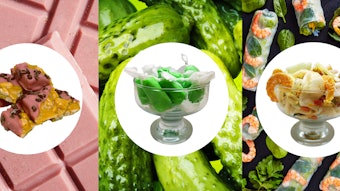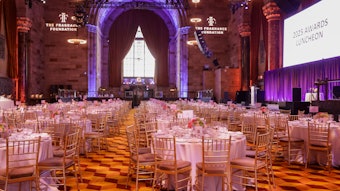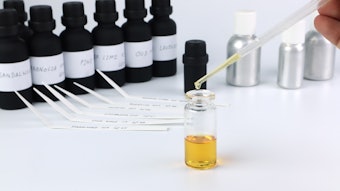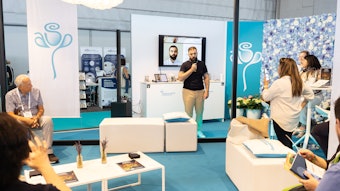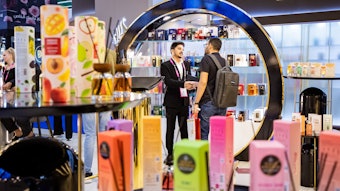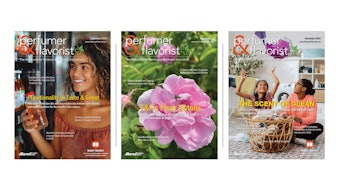
At the World Perfumery Congress 2018, fragrance professionals explored a sense of what's next with discussions on consumer trends, intellectual property, technology and more.
What Consumers Want
WPC started with a look at the most important person in the fragrance supply chain – the consumer.
During her keynote presentation entitled “The Future of Fragrance & Growth Opportunities,” Hannah Symons, beauty and fashion research manager at Euromonitor International, discussed how the fragrance industry is growing and what consumers want.
“What does quality mean to ... the consumer,” asked Symons during her presentation. “At Euromonitor, we have identified six key pillars that we believe encapsulates the new consumer. They are simplicity, purpose, well-being, experience, empowerment and differentiation.”
Delving into this idea, she provided insight into each category and the story behind the contemporary consumer. They include:
- Simplicity. Consumers are getting back to the basics. They are looking for products with less marketing, a clear focus on the scent and a minimalistic approach.
- Purpose. In addition to getting back to the basics, consumers are looking for products that support a cause or integrate ethical values and promote inclusivity of all genders, cultures and religions.
- Well-being. Just as people are concerned about their wellbeing and buying beauty products to address it, they are now looking at fragrance in the same light. Consumers are focusing on needs and wellness claims.
- Experience. Online brands and alternative distribution models are influencing the demand of fragrance. Additionally, consumers are looking for novelty and something memorable.
- Empowerment. Consumers also feel more empowered to make their fragrance decision and are moving away from past trends, including celebrity fragrances. Digital platforms also help in the discovery of new scents.
- Differentiation. Similar to finding a novel product, consumers are interested in bespoke services and brands with a story.
Protecting Your Fragrance Property
During the first Petit WPC session, the topic turned to the issues of protecting intellectual fragrance property, with a presentation by Claire Guillemin, Ph.D., a lawyer specializing in fragrance IP and Christophe Laudamiel, master perfumer for DreamAir NYC.
Due to the limited application of patents and repeat refusal for fragrance copyrights by the court, the two spoke about the potential of trademarks for protecting fragrance property. In order to qualify for a trademark, a fragrance must be perceptible and distinguished from other products. Prior to 2002, fragrances were more frequently trademarked but changed after the attempt to trademark methyl cinnamate. From there, the European trademark system updated its requirements for the graphic representation of fragrances to be “clear, precise, self-contained, easily accessible, intelligible, durable and objective.”
“There was an issue with the Chanel No. 5 registration. As a trademark, you can’t register the mark of your company as the smell that you sell in a bottle. That is not your trademark, that is your product,” said Laudamiel. “Chanel can invent a scent logo that represents the company that doesn’t smell like Chanel No. 5 and that can be put on any product or packaging.”
A New Method to Share Intellectual Property
Later in the day, Saskia Wilson-Brown, director of The Institute of Art and Olfaction, picked up the topic of intellectual property and discussed a new model for protecting perfumers and their creation through a database that utilizes Creative Common principals.
"The IAO and its collaborators are launching the Open Sourcing Smell Culture program because I believe that more information would be shared if there were the right structures in place," said Wilson Brown. "We aim - in short - to create alternatives to copyright that protect the people doing the creative work while allowing for a free flow of creativity in a similar way to how it works in media. In this, we're focusing our efforts on contemporary independent and artisan perfumers. "
Drawing parallels to the world of media, Wilson-Brown showed that the perfume landscape is seeing a rise in the democratization of fragrance information, consumers appreciation of independent perfumes and a need to share information more freely. She proposes a structure for intellectual property dissemination, one that gives creators agency. In collaboration with Mediamatic and Creative Commons, she is working on a database where fragrance creators can share information that they have rights to, which will create an alternative space to share intellectual property.
"Smell brings us together and grounds us in reality.”
Looking at the Larger Picture
Wrapping up day one of WPC, Armand de Villoutrey, president of perfumery and ingredients for Firmenich presented his talk, “Focusing on the ‘Why:’ A New Direction for Our Industry.”
During his presentation, he focused on getting back to basics with perfume – of helping consumers live better lives through the power of scent. He highlighted two big shifts that are changing the perfume consumer and the world at large: technology and the impact of global warming.
“The world hasn’t been healthier, wealthier or better educated than today. But, we are hit by an equally unprecedented speed of change,” said de Villoutrey. “The world is going digital at the speed of light. This is a global phenomenon. There are more people online in China and India than there are people in the U.S… However, this race to embrace the digital transformation, running this race, we must not lose sight of the purpose of technology, {whice is} to serve and enhance the human experience.”
The second big shift, and arguably the more immediate problem, is the issue and impact of global warming. Not only does this impact the F&F industry greatly, but our world itself.
“So, what about scent in all this? When I considered, digitization or our planet’s emergency, with its opportunity and challenges … you get to reflect on what makes us fundamentally human. It brings us back to a sense of who we are,” said de Villoutrey. “Our most primal sense is connected to our reptilian brain and the sense of survival {is our} sense of smell. Smell brings us together and grounds us in reality.”

